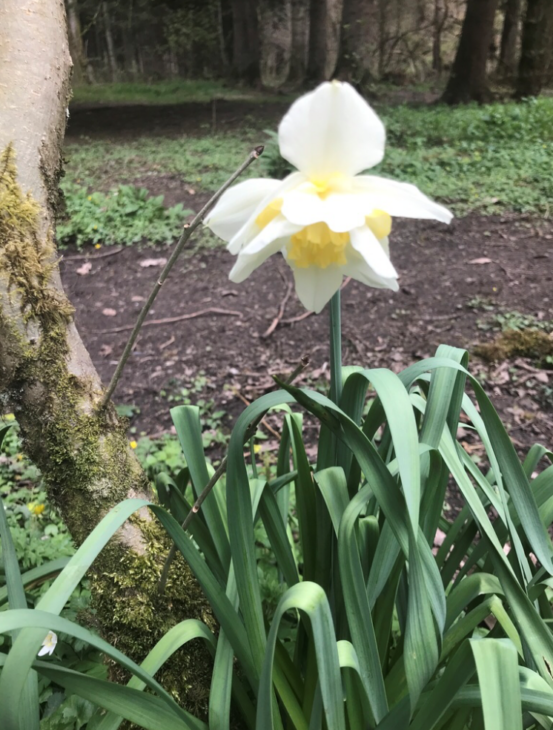A New Home for Our Little Yellow Friends
,
Everybody loves daffodils. Those yellow trumpets that herald the arrival of spring. I don’t think I could name a more cheerful plant. Their Latin name “Narcissus” is also the name of a Greek legend where a beautiful young man fell in love with his own reflection and stared for so long that he starved to death. Daffodils might also be the key to defeating Alzheimer’s as they contain a chemical called galantamine which is known to slow the progression of the disease.
As bright and cheerful as they may be, some places are just not right for daffodils and an ancient woodland is one of them. If you haven’t visited Cumbernauld Glen this month, I would recommend going now and seeing the bluebell woods in all their glory. You might spot the occasional daffodil in amongst the sea of blue but what you might not know is that daffodils can displace our native bluebell. According to the charity Plantlife, many British wildflowers are under threat with the worst affected counties losing one species every year. Most horticultural varieties of daffodil are bred for their size, colour and shape and not their usefulness to wildlife. Many of these garden hybrids have lost the characteristic fragrance, pollen and nectar that attracts pollinators.
However the Scottish Wildlife Trust recognises that the daffodils in the Glen were no doubt planted by well-intentioned individuals who just wanted to add a spot of cheer to the woods which is why they have asked our volunteers to relocate the daffodils instead of simply digging them up. The daffodils will be much more at home in a suburban environment and we are looking at a couple of sites in Carbrain where the daffodils will add a nice splash of colour without disrupting a delicate woodland ecosystem.

